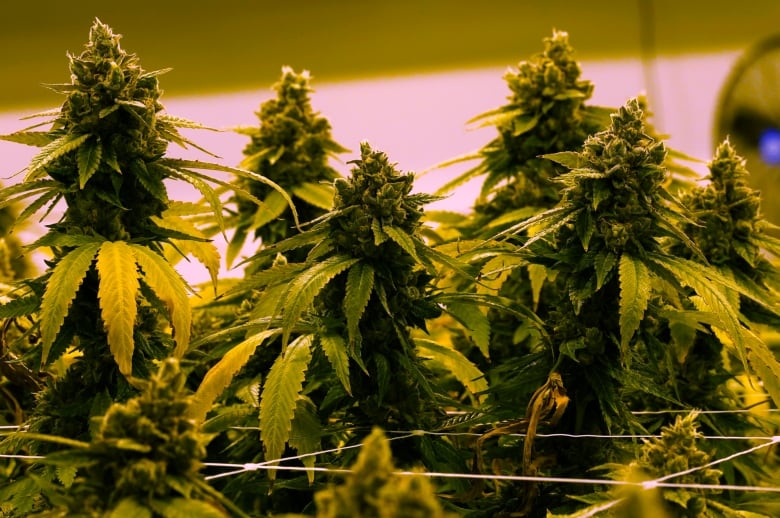This story is part of CBC Health’s Second Opinion, a weekly analysis of health and medical science news emailed to subscribers on Saturday mornings. If you haven’t subscribed yet, you can do that by clicking here.
When the use of cannabis became legal in Canada more than five years ago, there was hope that it would help ease access for medical users of marijuana. But doctors say the evidence for some medical usage is lacking, leaving some patients frustrated.
The federal government-run program for medical cannabis started more than 20 years ago. Soon after, patients started to complain it was difficult to find doctors who were on board with giving medical authorizations to obtain the drug through official channels.
Some hoped legalization of recreational cannabis in 2018 would also ease hurdles on the medical side, such as learning how effective or ineffective it is for particular conditions, reducing stigma and red tape, as well as prices.
But that’s not how it’s worked out for all patients.
At Santé Cannabis, a Montreal-based clinic and research centre, a nurse calls patients to check in after their first visit for chronic pain from conditions such as osteoarthritis, as well as multiple sclerosis, anxiety and poor sleep.
“To this day, we have patients that are struggling at one month to receive their order or to … complete the process because it is still so complicated,” said Erin Prosk, the clinic’s president and co-founder.

Prosk said the primary example of patients lacking smooth access is how they still have to wait for shipments to come in the mail instead of getting medical cannabis from their pharmacist.
That way, patients could talk to a health professional if they have questions about the dose instead of relying on a sales clerk, Prosk said.
Patients also rely on physicians for medical guidance.
But a spokesperson for the Canadian Medical Association pointed to its 2020 policy that says the group “has consistently expressed concern with the role of gatekeeper that physicians have been asked to take as a result of court decisions.”
Countering workplace misconceptions
For some users of medical marijuana, stigma around the drug remains an issue even with the legalization of recreational use of the drug in 2018.
Ashar, 23, says he faces misconceptions in the workplace around use of medical cannabis and wants the protection that comes with the medical access stream to continue.
When he was 17, Ashar was diagnosed with a learning disability that has symptoms similar to those shown by people with autism. After conventional treatments like psychotherapy didn’t improve his difficulty with speaking, a family physician suggested trying medical cannabis in the form of a fine powder, delivered in an inhaler-like device similar to those used by people with asthma.
The Halifax resident said when he first entered the workplace soon after legalization in 2018, he faced stigma in the form of comments about addiction from co-workers around his use of medical cannabis that’s low in psychoactive tetrahydrocannabinol, or THC. Given how the myths could jeopardize job prospects, CBC News agreed not to use his last name.
“The medical stream is not just a method to gain access,” Ashar said. “It’s for legitimate medical reasons. It also gives you the ability to have documentation to be protected at work.”
Ashar left his first role in the federal civil service.
He’s now looking for more recognition in all workplaces of people who have severe disabilities and how medical cannabis can be used to improve performance on the job. Asher hoped legalization would reduce stigma and skepticism about how cannabidiol — or CBD — in cannabis is not psychoactive and doesn’t hinder work.

“Because my disability impacts my memory and my speech, people naturally think I may be impaired, even though I tell them [medical cannabis] is not impairing,” he said. “I had a boss who asked me … just take medication to improve your symptoms.”
A letter Asher received offering him another position said cannabis was prohibited, and Ashar said he refrained from using his inhaler. “It caused a down[ward] spiral in my ability to work.”
Authorizations fall
Other patients are looking to physicians to guide them on whether cannabis might be right for them, and if so, how to dose it safely.
Dr. Mary-Ann Fitzcharles, a rheumatologist and a pain medicine physician at Montreal’s McGill University, said use of cannabis to treat lasting pain symptoms is less common now than 20 years ago, when legal access to medical cannabis was introduced.
The federal government’s monthly tracking of medical cannabis authorizations also shows a decline.
Why isn’t known, but federally licensed sellers were at about 366,000 in 2019, peaked at roughly 377,000 in September 2020 during the COVID-19 pandemic emergency and declined to 188,300 in September 2023.
Fitzcharles pointed to lack of effectiveness, high cost and side-effects as reasons people turn away from medical cannabis, based on her practice and research. On effectiveness, patients may say in surveys that cannabis helps control their pain or inflammation, but those effects may not pan out in better-designed studies like randomized trials.
The number of Canadians using cannabis has increased by 25 per cent since it was legalized five years ago, a new commentary in the Canadian Medical Association Journal stated. But hospitalizations are also on the rise, prompting some doctors to say more information and better policies are needed to better mitigate negative outcomes.
“As a physician, I will have some patients who say that it really does make a difference,” such as people with rheumatic disease, Fitzcharles said. “The question is, is this real? Is this a placebo effect?”
Use of cannabis by people who have cancer is one of the most established areas of medical research on the products, she said.
Towards regular drug stream
In March, the federal government’s expert panel reviewing the Cannabis Act made recommendations in various areas, including medical cannabis.
To address the hurdle of not knowing what a particular form of cannabis effectively treats, the panel called “to move beyond a distinct medical access program so that cannabis is considered within standard drug approval pathways and part of conventional medical care.”
That way, medical cannabis products would have a Health Canada drug identification number, or DIN, as other medications do, showing it has been evaluated and authorized for sale in Canada.
The panel’s recommendations address some of the other hurdles Fitzcharles identified, including effectiveness and high cost. The panel is recommending:
- Allowing cannabis product sales in pharmacies to people with medical authorization.
- Removing the excise tax from medical cannabis.
- Supporting clinical guidance documents for health-care professionals on medical use of cannabis.
A report last week from Ontario’s chief medical officer of health, “Balancing Act: An All-of-Society Approach to Substance Use and Harms,” expands on those recommendations, including a suggestion of limits on potency, considering tiered taxation based on the THC content and establishing a “standard unit” of cannabis to improve surveillance and research on cannabis.
Finding a standard product is one barrier to doing studies because cannabis is such a complex mix of compounds, said Fitzcharles.
Both Fitzcharles and Prosk at Santé Cannabis continue to field questions about misconceptions of the medication.
Prosk said governments treat cannabis like alcohol and tobacco.
“But it’s our first legal psychoactive substance that has both medical and recreational application,” she said. “I think that that has been sort of a fundamental challenge for the government and regulators to balance.”




